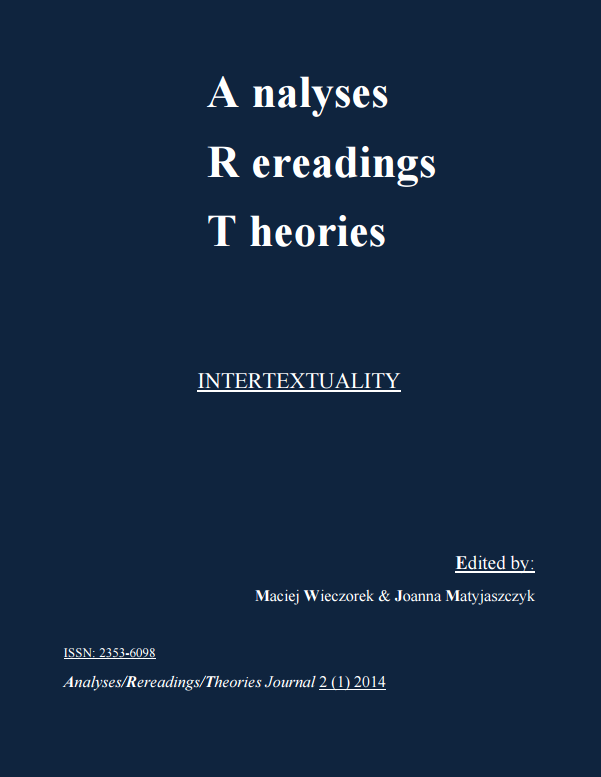Intertextual Adaptability of the Character of Sherlock Holmes from Literature to Film Production
DOI:
https://doi.org/10.18778/2353-6098.2.05Keywords:
Sherlock Holmes, Arthur Conan Doyle, detective story, House M.D.Abstract
This study explores the theme of intertextuality and adaptation between literature and film on the basis of Sherlock Holmes, the 19th/20th-century character conceived by Arthur Conan Doyle. It shows how the character has been adapted from literature into the cinematic domain on the basis of three modern TV series, including Dr. House (Heel & Toe Films/Fox, 2004), Sherlock (Hartswood Films/BBC, 2010), and Elementary (Hill of Beans/CBS, 2012). Sherlock Holmes, who first appeared in 1887, was originally featured in four novels and 56 short stories. However, since that time Holmes has been adapted for over 240 movies exploiting enormous popularity of this character in a variety of settings. The paper analyzes prototypical, basic features of Sherlock Holmes underlying its intertextual adaptability. As discussed in this study, there are four prototypical features of Sherlock Holmes, i.e. (1) outstanding powers of perception combined with intellect; (2) unconventionality in social behaviour; (3) helpful partner; and (4) ability to use scientific achievements. The paper demonstrates that Sherlock Holmes conceptualized in such a basic manner can act as successfully in modern cinematic productions as it did in late 19th-century literature.
References
Abrams, Jerold J. “Logika zgadywania w opowieściach o przygodach Sherlocka Holmesa i w serialu Dr House.” Dr House i Filozofia. Wszyscy kłamią. Ed. William Irwin and Henry Jacoby. Gliwice: Helion, 2009. 67-83. Print.
Google Scholar
Chapman, Paul M. “The Dark Beginnings of Detective Fiction.” twbooks.co.uk. n.p., n.d. Web. 28 Feb. 2011.
Google Scholar
Doyle, Arthur Conan. The Complete Sherlock Holmes. London: CRW, 2005. Print.
Google Scholar
Elementary. Dir. Michael Cuesta and John David Coles. Perf. Jonny Lee Miller, Lucy Liu, Aidan Quinn, Jon Michael Hill and Natalie Dormer. CBS, 2012. DVD.
Google Scholar
Gillberg, Christopher. “Asperger Syndrome—Some Epidemiological Considerations: Research Note.” Journal of Child Psychology and Psychiatry. 30.4: 631-38. July 1989. Web. 15 July 2013.
Google Scholar
DOI: https://doi.org/10.1111/j.1469-7610.1989.tb00275.x
Goldblatt, David. “Czy House jest Supermenem?: Perspektywa Nietzschego.” Dr House i Filozofia. Wszyscy kłamią. Ed. William Irwin and Henry Jacoby. Gliwice: Helion, 2009. 41-50. Print.
Google Scholar
House M.D. Dir. David Shore. Perf. Hugh Laurie, Robert Sean Leonard, Lisa Edelstein, Omar Epps and Jesse Spencer. Tim Film Studio, 2010. DVD.
Google Scholar
Mamatas, Nick. “Dlaczego uwielbiamy Holmesa i uwielbiamy nienawidzić House’a.” Dr House całkowicie bez autoryzacji. Ed. Leah Wilson. Warszawa: Prószyński i S-ka, 2009. 111-119 Print.
Google Scholar
Sherlock. Dir. Coky Giedroyc and Paul McGuigan. Perf. Benedict Cumberbatch, Martin Freeman, Rupert Graves, Andrew Scott, Una Stubbs, Louise Brealey and Mark Gattis. BBC, 2010. DVD.
Google Scholar
Spinks, Lee. Friedrich Nietzsche (Routledge Critical Thinkers). London: Routledge, 2003. Print.
Google Scholar
DOI: https://doi.org/10.4324/9780203451755
Downloads
Published
How to Cite
Issue
Section
License

This work is licensed under a Creative Commons Attribution-NonCommercial-NoDerivatives 3.0 Unported License.









